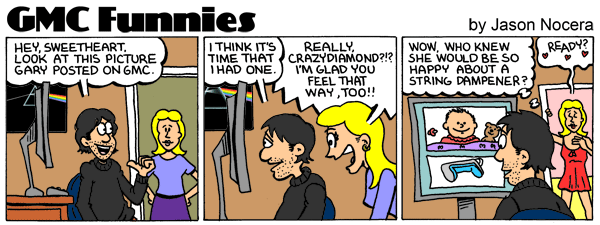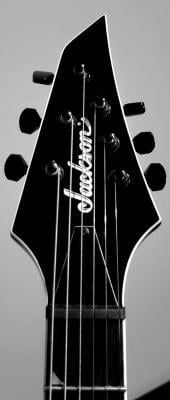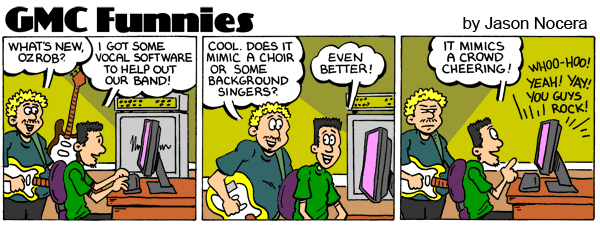Easy Understandable Fretboard, Easiest theory lesson |
|
 |
Replies
(1 - 19)
|
|
|
|
| Oct 17 2009, 08:36 PM |
|
cool idea for a lesson, I really like it, thank you for this!
-------------------- |
|
|
||
|
|
|
|
| Oct 17 2009, 08:39 PM |
|
My pleasure ....
|
|
|
||
|
|
|
|
| Oct 17 2009, 11:45 PM |
|
This was a very well written lesson - I'd be interested in hearing if this approach helps people with little theory knowledge! Thanks Crazy
|
|
|
||
|
|
|
|
| Oct 18 2009, 07:23 AM |
|
QUOTE A, A#, B, C, C#, D, D#, E, F, F#, G, A. I think you meant G# at the end. |
|
|
||
|
|
|
|
| Oct 18 2009, 02:13 PM |
|
Nice one. Very good explanation.
-------------------- Check out my <a href="https://www.guitarmasterclass.net/instructor/Emir-Hot" target="_blank">Instructor profile</a>
www.emirhot.com www.myspace.com/emirhotguitar www.myspace.com/sevdahmetal |
|
|
||
|
|
|
|
| Oct 18 2009, 02:46 PM |
|
Very good and useful lesson! Thanks for contributing!
-------------------- For GMC support please email support (at) guitarmasterclass.net
Check out my lessons and my instructor board. Check out my beginner guitar lessons course! ; Take a bass course now! |
|
|
||
|
|
|
|
| Oct 18 2009, 04:42 PM |
|
Nice job man!
|
|
|
||
|
|
|
|
| Oct 19 2009, 06:21 AM |
|
Thanks for this My theory knowledge is zero and I am sometimes daunted by talk on GMC about theory like modes and triads and so on. The problem is where do you start to learn all of this and how does it link to playing at a beginner ish level. Your explanation made perfect sense and I feel it will be really helpful and useful Boson, In terms of theory I'm not much further along than yourself. I can play, but little knowledge of theory has limited my songwriting creativity. I don't want to detract from Crazy_diamond's post, so I'll just say this is what is helping me immensely in terms of theory. 1) Learn the patterns of the major scale. (Here's how I did it: https://www.guitarmasterclass.net/guitar_fo...p;#entry266666) These patterns/shapes/boxes remain the same for every major scale. The difference is where you play them on the fretboard. Pick any of the patterns and play it anywhere on the fretboard. The location of the root note for that pattern tells you what major scale you are playing. 2) Use this site extensively (hopefully one day GMC will have its own tool like this): http://www.all-guitar-chords.com/guitar_sc...=0&choice=1 3) When you know the patterns (however you want to learn or remember them) and how to locate each major scale on the fretboard, the next step is practice improvising. Use some sort of recording device (DAW, tape recorder, MIDI software, etc) to write a basic repeating chord pattern. Say you want to practice improvising in C Major, then lay down a simple chord progression. From the website I linked to above, go to the "Scales to Chords" tool: http://www.all-guitar-chords.com/scales-to-chords.php -> Select "C Major" scale, and it will tell you all the chords in it. Select 3 simple chords and record a 4/4 pattern (for starters) of say C, G and F chords over and over. Then just play over the chord progression improvising with a pattern/box (any of them) from the C Major scale. Over time your ear will start to help you discover what sounds good and where notes are located on your fretboard. Just keep it simple and have fun. When you are familiar with one box, switch to another and slowly internalise it. Don't complicate it, and with practice it will begin to just come naturally to you. As you get comfortable with the boxes, start practicing moving between them as this will allow you to learn the fretboard horizontally and not just vertically. -------------------- |
|
|
||
|
|
|
|
| Oct 19 2009, 07:48 AM |
|
Boson, In terms of theory I'm not much further along than yourself. I can play, but little knowledge of theory has limited my songwriting creativity. I don't want to detract from Crazy_diamond's post, so I'll just say this is what is helping me immensely in terms of theory. 1) Learn the patterns of the major scale. (Here's how I did it: https://www.guitarmasterclass.net/guitar_fo...p;#entry266666) These patterns/shapes/boxes remain the same for every major scale. The difference is where you play them on the fretboard. Pick any of the patterns and play it anywhere on the fretboard. The location of the root note for that pattern tells you what major scale you are playing. 2) Use this site extensively (hopefully one day GMC will have its own tool like this): http://www.all-guitar-chords.com/guitar_sc...=0&choice=1 3) When you know the patterns (however you want to learn or remember them) and how to locate each major scale on the fretboard, the next step is practice improvising. Use some sort of recording device (DAW, tape recorder, MIDI software, etc) to write a basic repeating chord pattern. Say you want to practice improvising in C Major, then lay down a simple chord progression. From the website I linked to above, go to the "Scales to Chords" tool: http://www.all-guitar-chords.com/scales-to-chords.php -> Select "C Major" scale, and it will tell you all the chords in it. Select 3 simple chords and record a 4/4 pattern (for starters) of say C, G and F chords over and over. Then just play over the chord progression improvising with a pattern/box (any of them) from the C Major scale. Over time your ear will start to help you discover what sounds good and where notes are located on your fretboard. Just keep it simple and have fun. When you are familiar with one box, switch to another and slowly internalise it. Don't complicate it, and with practice it will begin to just come naturally to you. As you get comfortable with the boxes, start practicing moving between them as this will allow you to learn the fretboard horizontally and not just vertically. Thanks Oz Rob I will have a good look at this stuff -------------------- "Better to live one day as a tiger than a thousand years as a sheep"
|
|
|
||
|
|
|
|
| Oct 19 2009, 01:25 PM |
|
Awesome lesson man, very good theory explanations! I'm sure it will be very useful!
-------------------- - Ivan's Video Chat Lesson Notes HERE
- Check out my GMC Profile and Lessons - (Please subscribe to my) YouTube Official Channel - Let's be connected through ! Facebook! :) |
|
|
||
|
|
|
|
| Oct 19 2009, 05:01 PM |
|
Nice lesson, quite easy to follow.
-------------------- Youtube
MySpace Website Album "Let It Out" on iTunes and CD Baby Check out my video lessons and instructor board! The Pianist tune is progress,check it out! "ok.. it is great.. :P have you myspace? Can i to personalize this for you guy?" |
|
|
||
|
|
|
|
| Nov 29 2009, 04:21 AM |
|
very clear lesson, I'm sure many people will apreciate it,
Thank you! -------------------- Visit my:
INSTRUCTOR PROFILE "If a composer could say what he had to say in words he would not bother trying to say it in music." Gustav Mahler Subscribe to my Youtube Channel here |
|
|
||
|
|
|
|
| Dec 15 2009, 08:08 PM |
|
Just added this one to our knowledge base Student Instructor's Portal
Leson here! It was a great read -------------------- Guitars:
Fender American Deluxe Stratocaster, Ibanez RG2570MZ, Epiphone SG G-400 Amp: Vox AC4TVH head + V112TV cab Effects: Vox Satchurator, Vox Time Machine, Dunlop CryBaby, Boss MT-2, Boss CE-5, Boss TU-2, Boss ME-70 Recording: Line-6 POD X3 + FBV-Express, Pandora PX5D GMC wants YOU to take part in our Guitar-Wikipedia! Have a good time reading great articles and writing your own with us in our GUITAR WIKI! Share your playing and get Pro-advice from our Instructors: Join REC |
|
|
||
|
|
|
|
| Dec 15 2009, 11:52 PM |
|
very well done man! all these explanations are so useful!
|
|
|
||
|
|
|
|
| Dec 16 2009, 12:47 AM |
|
I'm glad you liked it guys .... I'm doing what I can to contribute ...
|
|
|
||
|
|
|
|
| Dec 16 2009, 09:01 PM |
|
Very interesting. Thanks for this, man!
|
|
|
||
1 User(s) are reading this topic (1 Guests and 0 Anonymous Users)
0 Members:







































